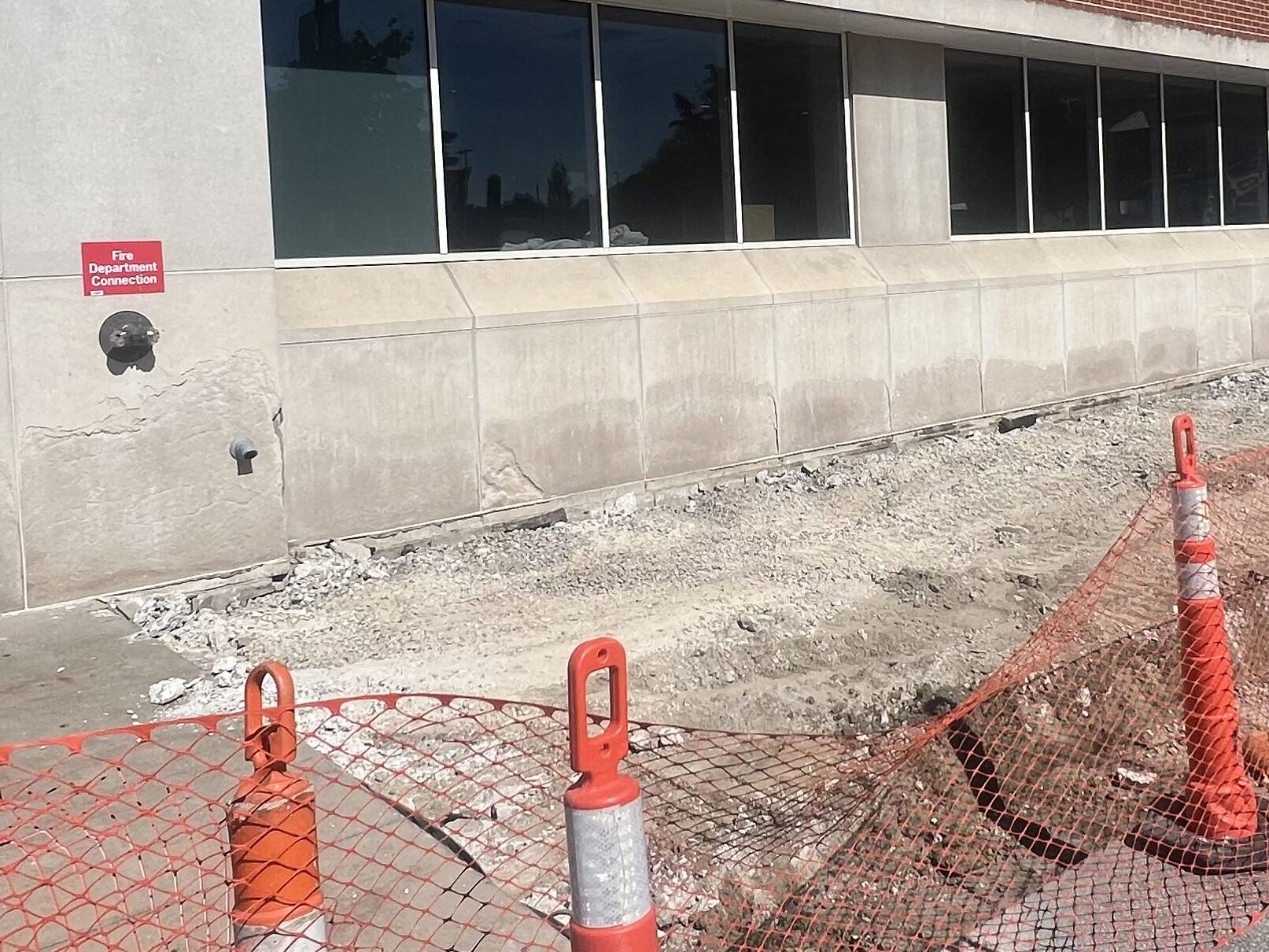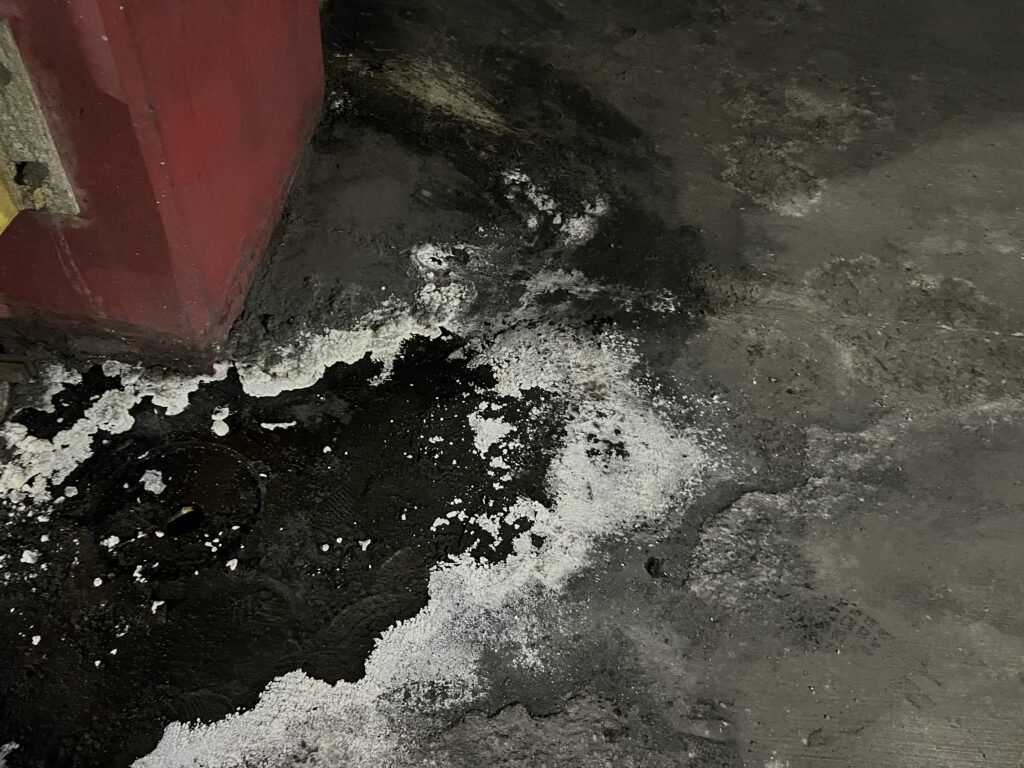The Importance of Parking Garage Pressure Washing: Addressing Salt Damage and Prevention Strategies

Parking garages are essential components of urban infrastructure, providing necessary spaces for vehicle parking in bustling metropolitan areas. However, these structures face numerous challenges that can compromise their longevity and safety. One critical aspect of parking garage maintenance is pressure washing, which helps combat various forms of damage, including the detrimental effects of road salt. This article explores the importance of pressure washing for parking garages, focusing on salt damage, its visual indicators, and best practices for prevention.
The Impact of Salt Damage on Parking Garages
Understanding Salt Damage
Salt is commonly used on roadways during winter months to melt ice and improve traction. While effective in enhancing vehicular safety, this de-icing agent poses significant risks to parking garage structures. The primary form of salt used is sodium chloride, but other salts such as calcium chloride and magnesium chloride can also contribute to damage.
Salt damage occurs through several mechanisms:
- Spalling: When salt penetrates the surface of concrete, it attracts moisture. During freezing temperatures, this moisture can freeze and expand, causing the concrete surface to flake or spall. This results in unsightly patches and can lead to further deterioration if not addressed promptly.
- Corrosion of Reinforcing Steel: Salt accelerates the corrosion of embedded steel reinforcement bars (rebar) within concrete. As the saltwater solution seeps through cracks, it reaches the rebar, leading to rust formation. The expanding rust exerts pressure on the surrounding concrete, which can lead to cracking and structural failure over time.
- Alkali-Silica Reaction (ASR): Salt can exacerbate the effects of ASR, a chemical reaction between alkalis in cement and reactive silica in aggregates. This reaction causes further expansion and cracking of concrete, weakening its structural integrity.
Visual Indicators of Salt Damage


Salt damage manifests in several noticeable ways within a parking garage. Key visual indicators include:
- Surface Spalling: Flaking or chipping concrete surfaces indicate salt infiltration and moisture issues. This damage often appears as pitted or crumbled areas on the surface of the concrete.
- Cracking: Visible cracks, particularly in areas exposed to high traffic or moisture, can signal the presence of salt damage. These cracks may widen over time if left untreated.
- Rust Stains: The presence of rust stains on concrete surfaces or exposed rebar signifies corrosion due to salt exposure. These stains can appear as reddish-brown streaks on the concrete.
- Discoloration: Salt accumulation can lead to discoloration of concrete surfaces, resulting in unsightly patches that detract from the overall appearance of the parking garage.
The Role of Pressure Washing in Preventing Salt Damage
Benefits of Pressure Washing
Pressure washing is a highly effective maintenance strategy for parking garages, providing several key benefits:
- Removal of Salt Residues: Regular pressure washing helps to eliminate salt deposits that accumulate on concrete surfaces, reducing the risk of moisture infiltration and subsequent damage.
- Enhanced Aesthetic Appeal: Clean parking garages create a welcoming environment for users, improving overall satisfaction and perception of the facility.
- Increased Safety: By removing grime, oil, and other contaminants, pressure washing reduces slip hazards, contributing to a safer environment for pedestrians and vehicles.
- Protection of Structural Integrity: Regular cleaning helps prevent the deterioration of concrete and reinforcing steel, extending the lifespan of the parking garage and reducing long-term maintenance costs.

Manufacturers’ Recommendations
Leading pressure washing equipment manufacturers provide guidelines for effective cleaning practices specific to parking garages. Here are some notable recommendations:
- Karcher: Karcher emphasizes the importance of using high-quality pressure washers with adjustable pressure settings to prevent damage to delicate concrete surfaces. For most parking garages, a pressure setting between 2,500 and 3,000 PSI is recommended. They also recommend utilizing rotary surface cleaners for even and efficient cleaning.
- Simpson Cleaning: Simpson Cleaning advocates for routine maintenance of pressure washing equipment to ensure optimal performance. They recommend training personnel on safe and effective pressure washing techniques to minimize risks during operation. Additionally, they suggest using eco-friendly detergents that are effective at removing grease and grime without harming the environment.
- Bosch: Bosch highlights the benefits of selecting biodegradable cleaning agents that effectively combat salt residues and other contaminants. This approach not only protects the environment but also promotes the safety of users.
Best Practices for Preventing Salt Damage
To effectively prevent salt damage in parking garages, industry experts recommend the following best practices:
- Regular Pressure Washing: Schedule routine pressure washing at least twice a year, with increased frequency in regions that experience heavy snow and ice. This helps to remove residual salt and prevent moisture accumulation.
- Application of Concrete Sealers: High-quality concrete sealers create a protective barrier against moisture and salt infiltration. Experts recommend using sealers specifically designed for parking structures, as they can withstand the stresses of vehicular traffic and environmental exposure.
- Proper Drainage Systems: Ensure that parking garages are equipped with effective drainage systems to direct water away from concrete surfaces. This reduces the chances of moisture accumulation and subsequent salt damage.
- Use of Alternative De-icing Agents: Consider using alternatives to traditional road salt, such as calcium magnesium acetate (CMA) or potassium acetate, which are less harmful to concrete and the environment.
- Routine Inspections: Conduct regular inspections to identify and address any signs of salt damage early. Early intervention can prevent more extensive and costly repairs in the future.
Conclusion
Parking garage pressure washing is an essential maintenance practice that plays a vital role in prolonging the lifespan of these structures and mitigating the damaging effects of salt. By addressing the threats posed by salt damage and implementing preventive measures, facility managers can ensure the safety and functionality of parking garages while minimizing long-term repair costs. Regular maintenance not only preserves the structural integrity of the garage but also enhances its appearance and usability, making it a worthwhile investment for property owners.
References
- International Concrete Repair Institute (ICRI). (n.d.). “Managing the Effects of Deicing Salt.” Retrieved from ICRI.
- American Concrete Institute (ACI). (n.d.). “Corrosion of Reinforcement.” Retrieved from ACI.
- National Ready Mixed Concrete Association (NRMCA). (n.d.). “Concrete Sealers.” Retrieved from NRMCA.
- Karcher. (n.d.). “Pressure Washer Maintenance Tips.” Retrieved from Karcher.
- Simpson Cleaning. (n.d.). “Operator Training for Pressure Washing.” Retrieved from Simpson Cleaning.
- Bosch. (n.d.). “Eco-Friendly Pressure Washing Solutions.” Retrieved from Bosch.
By adhering to these guidelines and employing effective pressure washing techniques, property owners can safeguard their parking garages against the damaging effects of salt, ensuring these vital infrastructures remain in excellent condition for years to come.
